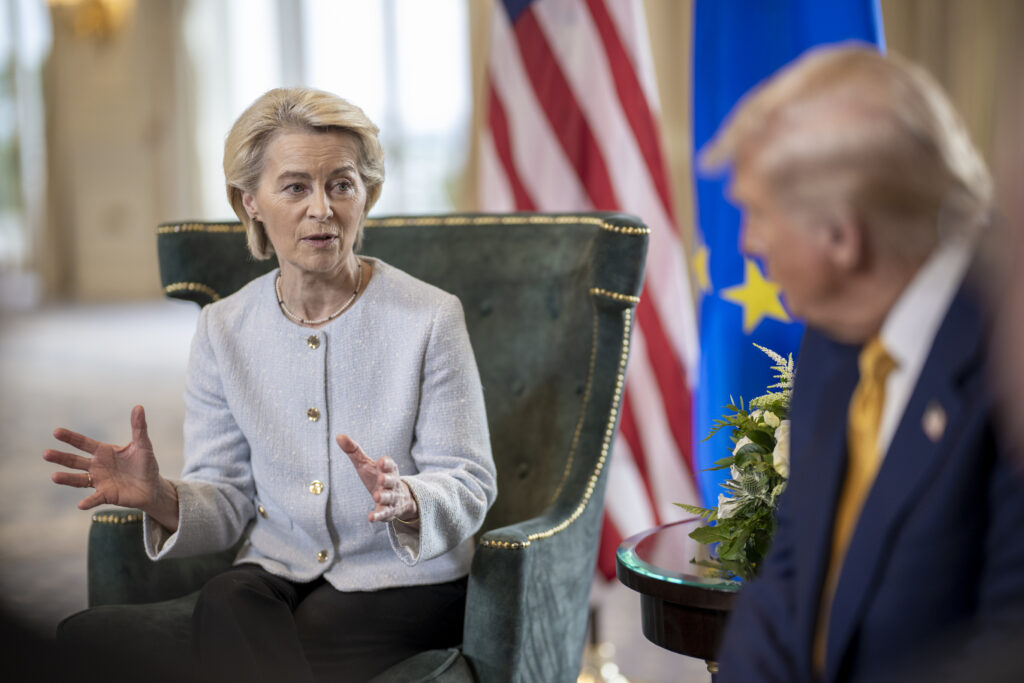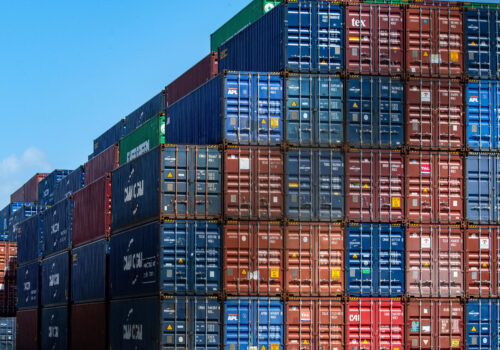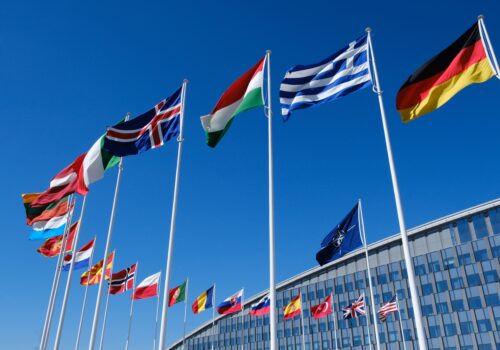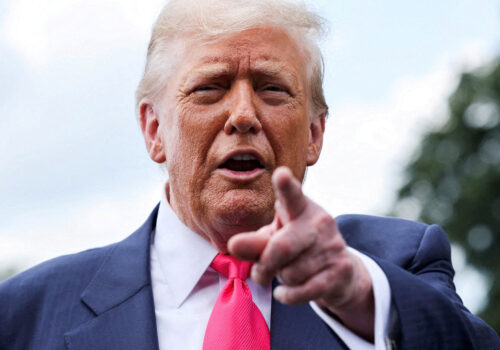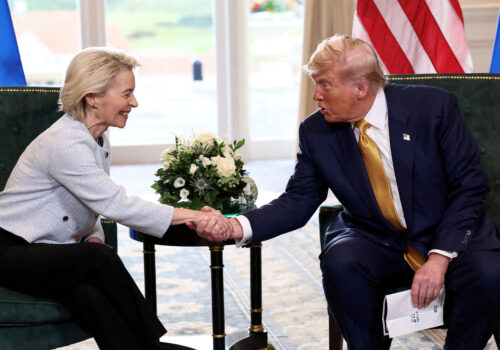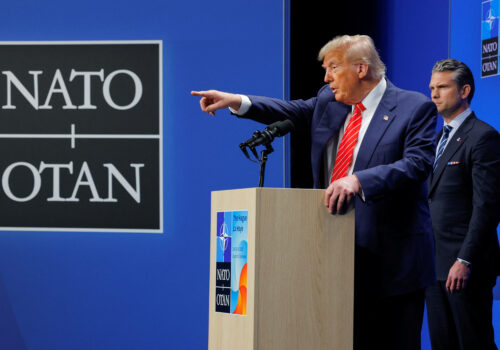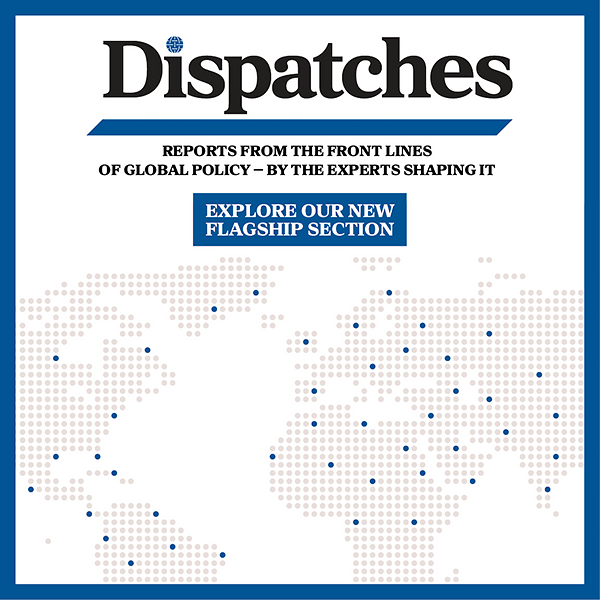Finalized in Scotland on July 27, the preliminary trade deal between the United States and the European Union (EU) stands out as one of only eight deals secured by the United States in advance of the Trump administration’s August 1 reciprocal tariff deadline. While the bloc avoided the threatened 30 percent tariff on all EU imports, the deal puts in place a 15 percent tariff on hundreds of EU goods from cars to wine to machinery. Not only does the deal leave many in Europe unhappy about the consequences for Europe’s businesses, it also comes on the heels of a major defense spending pledge NATO allies announced at the Alliance’s summit in June, when allies agreed to raise their national defense spending targets from 2 percent to 5 percent of their economies over the next decade (including defense-related spending).
On the surface, the trade deal is a major European concession to US economic demands. But seen through a security lens, both the trade deal and NATO’s defense spending pledge can be viewed as part of a short-term European strategy to keep their most important ally engaged on security and defense matters in which Europe remains overwhelmingly dependent on the United States. Will Europe’s strategy work, and at what expense for Europe’s own political and economic cohesion?
“It’s about security”
The EU trade deal is a complex agreement that separates out certain kinds of goods as exempt from tariffs on both sides, including aircraft, aircraft parts, and, at least for now, many pharmaceuticals. Meanwhile, cars will have a 15 percent rate, and copper and steel will be subject to a quota before the 50 percent rate kicks in. What about the EU tariffs on the United States? They drop to near zero on all goods. Plus, the EU committed to purchase $750 billion in energy from the United States over three years—a tall order considering total EU energy imports from the United States totaled only $70 billion last year.
On pure economic terms, it is impossible to justify this deal as a win for the EU. But the deal goes beyond economics. As EU trade chief Maros Šefčovič stated at the conclusion of the deal: “It’s not only about the trade; it’s about security, it’s about Ukraine, it’s about current geopolitical volatility.” Indeed, the deal was very much part of Europe’s continued efforts to sustain US support for Ukraine and for NATO. Yet Europe runs a risk in pursuing this approach. Even as the bloc understandably prioritizes defense and security interests with the United States, it may come at the cost of the economic and political cohesion it needs to re-arm and boost its own defenses in the longer term.
Building on NATO’s Hague summit
This strategy was also on display at the NATO Summit in The Hague in June, when at the urging of the Trump administration, NATO allies agreed to a bold new spending target of 5 percent of gross domestic product on defense and defense-related expenses by 2035. NATO Secretary General Mark Rutte trumpeted this new target as an important signal that Europeans are stepping up to strengthen the Alliance’s deterrence and defense.
On the one hand, this is true. Russia’s persistent and long-term threat to NATO is driving allies (particularly those on NATO’s eastern flank) to ramp up defense spending and press forward with security assistance to Ukraine. On the other hand, this new pledge could still prove more of an immediate political tool to appease a skeptical United States rather than an embrace of such a substantial shift in spending priorities. The 5 percent pledge could also backfire—leading to another irritant in allies’ bilateral relationships with the United States if they cannot meet the new defense spending target.
Short-term play over long-term goals?
In the short term, Europe’s strategy of serving US President Donald Trump political wins to keep the United States engaged on transatlantic security concerns—not least among them bringing a just and sustainable peace to Ukraine—appears to be working. First, the shift in the US president’s tone at the NATO Summit was palpable. A long-time skeptic of NATO’s value and relevance, Trump left the summit praising leaders’ “love and passion” for their countries and emphasizing that NATO was not, in fact, a “rip off.” A few weeks later, Trump sat next to Rutte in the Oval Office and announced a new weapons deal for Ukraine in which European nations will purchase American-made weapons on behalf of Ukraine—effectively restarting US weapons transfers to Kyiv.
But Europe is not a monolith, and such a strategy will almost certainly have political costs for politicians across the bloc. Some allies, including Spain, are already pushing back against the new defense spending target. Key European leaders are also publicly critical of the US-EU trade deal, with the most scathing review coming from France’s Prime Minister François Bayrou, who wrote on X: “It is a dark day when an alliance of free peoples, united to affirm their values and defend their interests, resigns itself to submission.”
The challenge for European allies now is that they need to meet a massive new defense spending commitment at a time of overstretched budgets whose condition could be worsened by the new trade deal. The fact that this deal avoids the worst-case scenario of a trade war will be little comfort when several countries risk breaching the EU’s fiscal sustainability rules in the years ahead. While it’s true that an escape clause has been activated for the majority of EU members to borrow more for defense spending without triggering a breach of the rules, there is no guarantee for the future. At a moment when Europe needs more collective economic action to meet its security needs, the finger pointing from the trade deal could make it harder to achieve.
There is also the question of whether Europe can deliver what it has promised the Trump administration. Several allies face an uphill battle to achieve greater defense spending in light of populist opposition parties and anemic economic growth. Coming out of the trade deal, the European Commission has promised the United States $600 billion of new investments that it does not control and would have to come from the private sector. There is also vague language about reducing non-tariff barriers, including possibly addressing dreaded and difficult phytosanitary issues, such as chlorinated chicken. Without firm details, expect this part of the agreement to fall by the wayside.
Lastly, Europe accepting such concessions and demands from the United States may lead to fissures in the transatlantic relationship. After all, accepting the terms of a mercurial ally does little to build up confidence and goodwill among friends. In the back of every leader’s mind is the risk that one incident could derail either the security commitment, the economic deal, or both. Even this week, Trump mentioned that tariffs could be increased to 35 percent if the investment goals aren’t reached. That’s a difficult way to maintain an alliance.
But for now, leaders on both sides of the Atlantic appear content in setting aside longer-term concerns to ensure the United States doesn’t pack up and move on.
The next sign to look for may come from the US side. Will the forthcoming US National Security Strategy, National Defense Strategy, and Global Posture Review reveal that the United States plans to defend its longstanding vital national interests in Europe, as European leaders are hoping? Or will these reviews indicate that the United States is leaving Europe to the Europeans and will move on to strategic challenges in the Indo-Pacific and elsewhere? The next few months will tell.
In the meantime, Rutte and European Commission President Ursula von der Leyen have prioritized keeping the relationship with their strongest ally and biggest trading partner from going off the rails, potentially at the expense of Europe’s own political and economic cohesion. While this may be Europe’s short-term play, even more important will be building a Europe that can rely more on itself and less on the United States for its own defenses. Only then will Europe be able to better set the terms with both their great power rivals and strongest allies.
Torrey Taussig is the director of and a senior fellow at the Transatlantic Security Initiative in the Atlantic Council’s Scowcroft Center for Strategy and Security. Previously, Taussig was a director for European affairs on the National Security Council.
Josh Lipsky is the chair of international economics at the Atlantic Council and senior director of the Atlantic Council’s GeoEconomics Center. He previously served as an advisor at the International Monetary Fund.
Further reading
Fri, Aug 1, 2025
How Donald Trump remade global trade
New Atlanticist By Josh Lipsky
The US president has smashed the system, but the speed and scale of the smashing owes to a system that had been growing increasingly brittle for years.
Mon, Jul 28, 2025
Trump and von der Leyen made a deal. But the US and EU are drifting apart on trade.
New Atlanticist By Frances Burwell
Many elements of the Turnberry deal still need to be finalized, and the difficult process could drive the two sides even further apart.
Thu, Jun 26, 2025
Dispatch from The Hague: It’s been Trump’s week in Europe and Iran
Inflection Points By Frederick Kempe
What connects the recent events in Iran and at the NATO Summit is that they won’t be remembered for the threats countered but rather for the opportunities seized.
Image: July 27, 2025, Turnberry, Scotland, UK:President Donald J. Trump participates in a Bilateral with the President of the European Commission Ursula von der Leyen at the Trump Turnberry golf course in Turnberry, Scotland, Friday, July 27, 2025. (Credit Image: ? Daniel Torok/White House/ZUMA Press Wire) REUTERS
